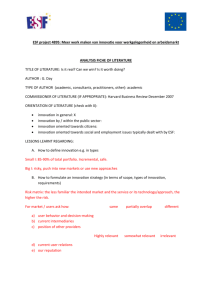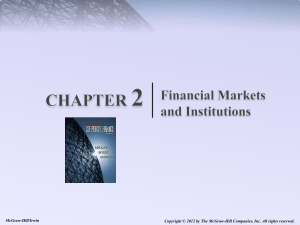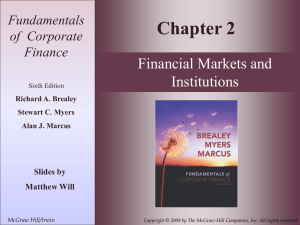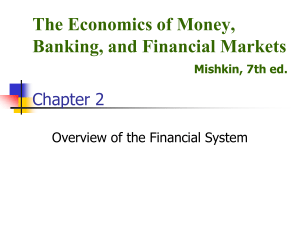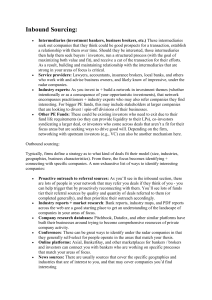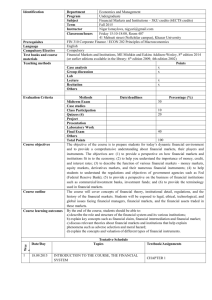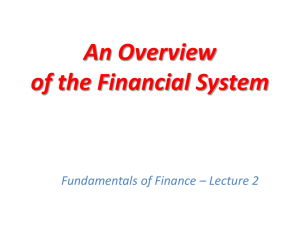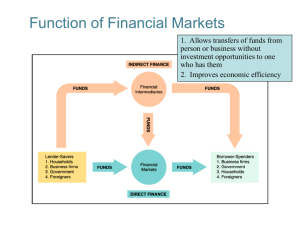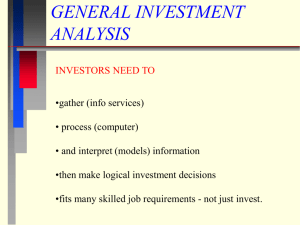Ch2
advertisement
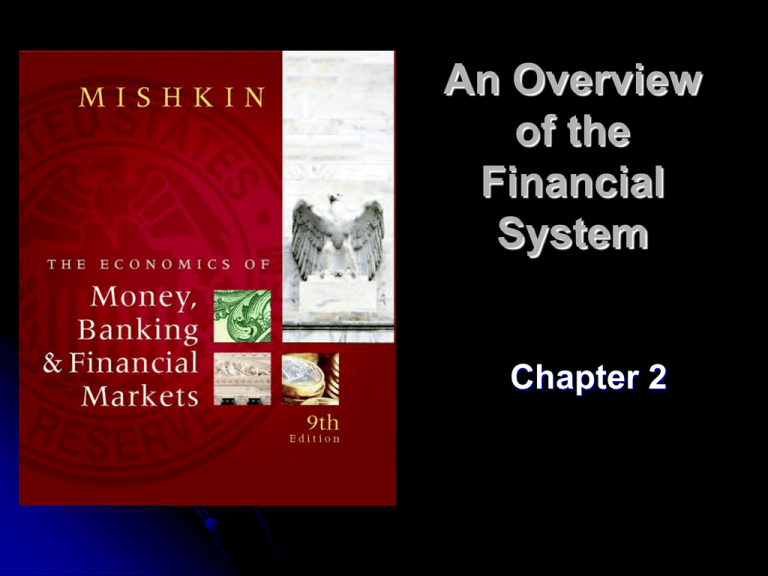
An Overview of the Financial System Chapter 2 Function of Financial Markets To bring lenders and borrowers together to make both of them better-off. Efficient allocation of capital, which increases production Improve the well-being of consumers by allowing them to time purchases better 2 Flows of Funds Through the Financial System 3 Structure of Financial Markets Debt and Equity Markets Primary and Secondary Markets (D&E) Exchanges (D&E) NYSE, NYBE, CBOT Over-the-Counter (OTC) Markets Investment Banks underwrite securities in primary markets Brokers and dealers work in secondary markets FX, Fed funds Money and Capital Markets Money markets deal in short-term debt instruments Capital markets deal in longer-term debt and equity instruments 4 Principal Money Market Instruments 5 Principal Capital Market Instruments 6 Internationalization of Financial Markets Foreign Bonds: sold in a foreign country and denominated in that country’s currency Eurobond: bond denominated in a currency other than that of the country in which it is sold Eurocurrencies: foreign currencies deposited in banks outside the home country Eurodollars: U.S. dollars deposited in foreign banks outside the U.S. or in foreign branches of U.S. banks 7 World Stock Markets 8 Function of Financial Intermediaries: Indirect Finance Lower transaction costs (time and money spent in carrying out financial transactions). Economies of scale Liquidity services (checking account) Reduce the exposure of investors to risk Risk Sharing (Asset Transformation: packaging risky assets into safer ones for investors) Diversification by pooling and issuing new assets 9 Function of Financial Intermediaries: Indirect Finance Deal with asymmetric information problems (before the transaction) Adverse Selection: try to avoid selecting the risky borrower. Gather information about potential borrower. (after the transaction) Moral Hazard: ensure borrower will not engage in activities that will prevent him/her to repay the loan. Sign a contract with restrictive covenants. 10 Primary Assets and Liabilities of Financial Intermediaries 11 Principal Financial Intermediaries and Value of Their Assets 12 Regulation of the Financial System To increase the information available to investors To ensure the soundness of financial intermediaries A report on upcoming regulation: http://www.bos.frb.org/economic/conf/conf54/pap ers/blinder.pdf 13 Increasing Information Reduce adverse selection and moral hazard problems Reduce insider trading (SEC). 14 Ensuring the Soundness of Intermediaries Restrictions on entry (chartering process). Disclosure of information. Restrictions on Assets and Activities (control holding of risky assets). Deposit Insurance (avoid bank runs). Limits on Competition (mostly in the past): Branching Restrictions on Interest Rates 15 Principal Regulatory Agencies of the U.S. Financial System 16

